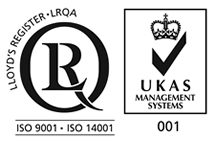
Main Products
Copyright 1998-2025 Firmetal Group All Rights Reserved. | Sitemap
The melting point of the Ta element in the NbTiTa alloy is as high as 3017℃, and its density is as high as 16.60g/cm3. The melting point of the Nb element is as high as 2469℃, and its density is as high as 8.57g/cm3. However, the melting point of the active metal titanium is only 1668℃, and its density is only 4.50g/cm3. The differences in melting points and densities among the three elements are significant. During vacuum consumable arc smelting, tantalum and niobium non-fusible blocks are highly prone to occur, and the technology for preparing ingots is extremely difficult. When preparing titanium alloys containing refractory elements, the common approach is to first prepare master alloys through powder metallurgy or smelting, and then prepare titanium alloys containing refractory elements. However, when preparing master alloys by powder metallurgy, there are problems such as the difficulty in controlling impurity elements, poor purity of the material, and high finished product quality. When preparing intermediate alloy shavings by the traditional smelting method, on the one hand, since the melting point of the Ta element is much higher than that of the Ti element, the risk of tantalum non-melting blocks in the master alloy is relatively large. On the other hand, due to the high content of Ta and Nb elements in the alloy, when the proportion of intermediate alloy shavings added is too large, it is prone to agglomeration during the smelting process, posing a significant metallurgical risk.
By combining the methods of powder metallurgy and vacuum electron beam smelting, the preliminary alloying and purification of Nb and Ta were achieved, and the Nb25Ta ingot with a decreased melting point and a decreased content of impurity elements was obtained. The raw materials of NbTiTa alloy are determined based on the measured composition of Nb25Ta rods. The raw materials of NbTiTa alloy at least include: Nb25Ta rods, sponge titanium, TiTa mixed powder or TiNb mixed powder.
Specifically, the Ti powder in the TiTa mixed powder is 1.5 times that of the Ta powder, and the Ti powder in the TiNb mixed powder is 1.5 times that of the Nb powder. The TiTa mixed powder obtained by mixing Ti powder and Ta powder was mixed in a V-type mixer for 2 hours, and the TiNb mixed powder obtained by mixing Ti powder and Nb powder was mixed in a V-type mixer for 2 hours. It should be understood that in this application, due to the high vacuum and large power of the vacuum electron beam furnace, the precise control of the composition of Nb25Ta rods is difficult. Based on the measured composition of the Nb25Ta rod, a small amount of TiTa mixed powder or TiNb mixed powder is added, which not only ensures the precise control of the composition but also guarantees a low content of impurity elements. Place the mixed powder fabric in the middle of the sponge titanium to prevent the formation of Nb and Ta non-melting lumps due to powder leakage. After the sponge titanium is mixed with TiTa powder or TiNb powder and then pressed to form titanium electrode blocks, grooves are formed at the centerline of the upper surface of the titanium electrode blocks, running through the opposite ends on both sides.